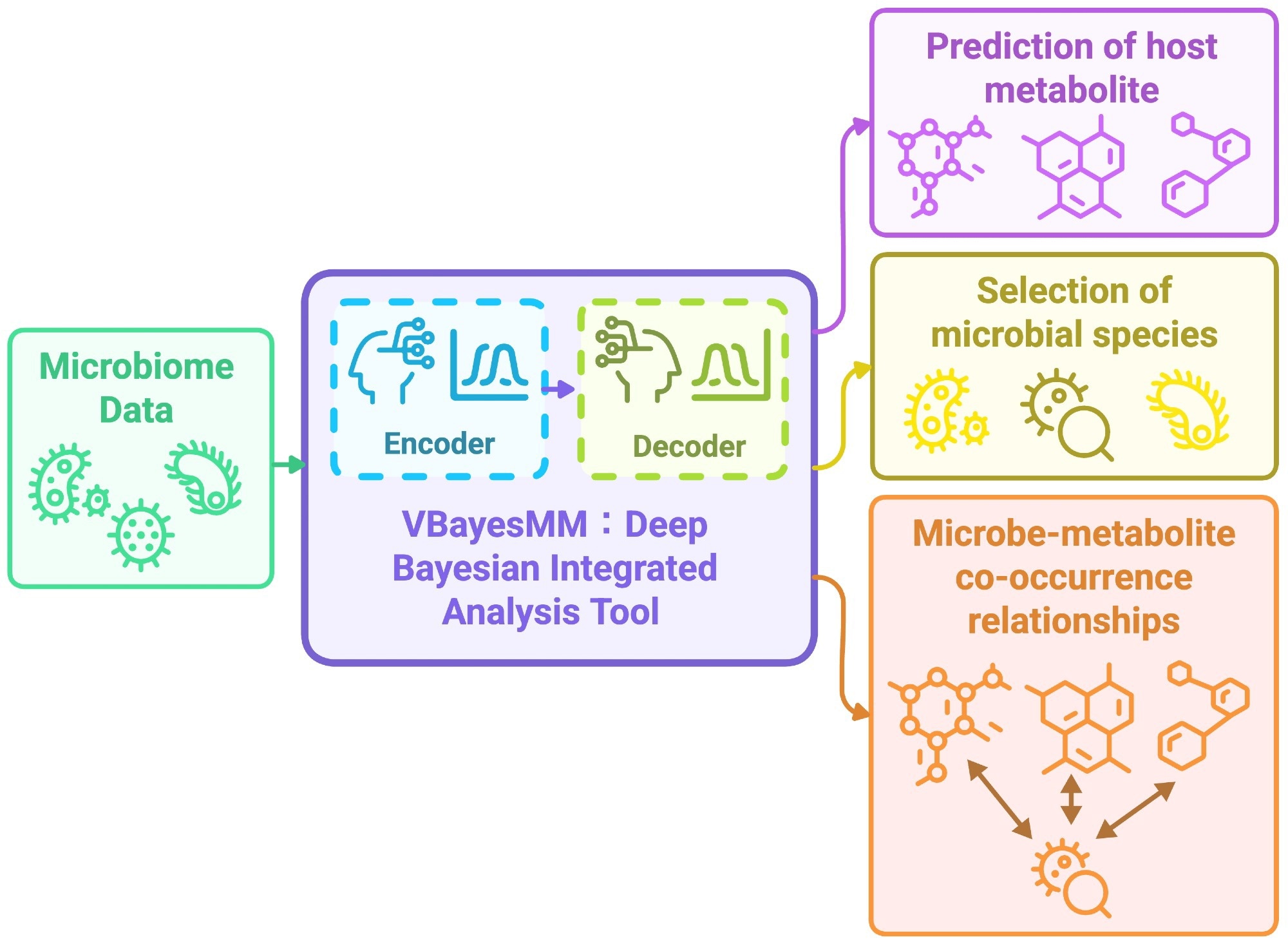Reviewed by Lauren HardakerJul 7 2025
Gut bacteria are well-known for playing an important role in a variety of health issues. However, their quantity and variety are immense, as are the ways in which they interact with the body’s chemistry and with one another.

VBayesMM overview. A simplified breakdown of the inputs, process, and outputs that make up the system. Image Credit: Tsunoda et al.
For the first time, researchers at the University of Tokyo employed a type of artificial intelligence known as a Bayesian neural network to analyze a dataset of gut bacteria in order to discover associations that current analytical techniques could not reliably detect.
The human body contains roughly 30 trillion to 40 trillion cells, while your intestines contain approximately 100 trillion gut bacteria. Technically, you have more non-self cells than self cells. Food for thought. And, speaking of food, these gut bacteria are responsible for some elements of digestion, but what may surprise some is how they can also be related to many other areas of human health.
Bacteria are extremely diverse, producing and modifying an extraordinary array of substances known as “metabolites.” These work as molecular messengers, penetrating your body and influencing everything from immunity and metabolism to brain function and mood. Unsurprisingly, understanding gut flora has a lot of benefits.
The problem is that we are only beginning to understand which bacteria produce which human metabolites and how these relationships change in different diseases. By accurately mapping these bacteria-chemical relationships, we could potentially develop personalized treatments. Imagine being able to grow a specific bacterium to produce beneficial human metabolites or designing targeted therapies that modify these metabolites to treat diseases.
Tung Dang, Project Researcher, Department of Biological Sciences, University of Tokyo
What's the issue here? As previously stated, there are uncountably many and diverse bacteria and metabolites, resulting in far more connections between these entities. Gathering data on its own is a huge task, but unpicking it to identify fascinating patterns that may reveal some valuable function is even more so. To do this, Dang and his team decided to test the use of cutting-edge artificial intelligence (AI) capabilities.
Dang added, “Our system, VBayesMM, automatically distinguishes the key players that significantly influence metabolites from the vast background of less relevant microbes, while also acknowledging uncertainty about the predicted relationships, rather than providing overconfident but potentially wrong answers.”
Dang explained, “When tested on real data from sleep disorder, obesity, and cancer studies, our approach consistently outperformed existing methods and identified specific bacterial families that align with known biological processes, giving confidence that it discovers real biological relationships rather than meaningless statistical patterns.”
VBayesMM provides researchers with more confidence than a technology that cannot address and express uncertainty issues. Even though the system is designed to handle severe analytical workloads, mining such large datasets still has a high computational cost; however, as time passes, this will become less of a barrier for people who want to use it.
Other current constraints include the fact that the system benefits from more data regarding gut bacteria than the compounds they create; when there is inadequate bacteria data, accuracy suffers. Furthermore, VBayesMM believes that microbes work independently, whereas gut bacteria interact in an enormously complicated variety of ways.
“We plan to work with more comprehensive chemical datasets that capture the complete range of bacterial products, though this creates new challenges in determining whether chemicals come from bacteria, the human body, or external sources like diet,” stated Dang.
He concluded, “We also aim to make VBayesMM’s more robust when analyzing diverse patient populations, incorporating bacterial ‘family tree’ relationships to make better predictions, and further reducing the computational time required for analysis. For clinical applications, the ultimate goal is to identify specific bacterial targets for treatments or dietary interventions that could actually help patients, moving from basic research to practical toward practical medical applications.”
Source:
Journal reference:
Dang, T., et al. (2025) VBayesMM: variational Bayesian neural network to prioritize important relationships of high-dimensional microbiome multiomics data. Briefings in Bioinformatics. doi.org/10.1093/bib/bbaf300.